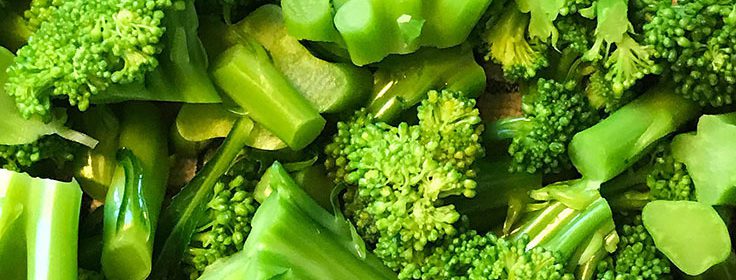Preserving the Harvest: Blanching Vegetables

I recently shot a video on July garden tasks. In it, I mentioned how I’d harvested most of my broccoli heads for freezing purposes. Blanching vegetables first is a way of preserving the harvest and applies to peas, beans, broccoli, and other veggies.
According to the National Center for Home Food Preservation, you blanch vegetables prior to freezing for several reasons:
“Blanching (scalding vegetables in boiling water or steam for a short time) is a must for almost all vegetables to be frozen. It stops enzyme actions which can cause loss of flavor, color and texture. Blanching cleanses the surface of dirt and organisms, brightens the color and helps retard loss of vitamins. It also wilts or softens vegetables and makes them easier to pack. Blanching time is crucial and varies with the vegetable and size. Under-blanching stimulates the activity of enzymes and is worse than no blanching. Over-blanching causes loss of flavor, color, vitamins and minerals. Follow recommended blanching times.”
Blanching is a simple task so I wanted to explain how to do it:
First, prepare your vegetables. Examples: for shelling peas, remove the peas from the pods; for green beans, snap them into bite-sized pieces; and for broccoli, cut up the head into manageable-sized chunks.
Fill your kitchen sink with cold water. I even add in some ice cubes to make it as cold as possible.
Bring a large kettle of water to a boil.
Add your vegetables to the kettle (if you have really large quantities, I’d recommend only blanching about a pound of veggies at a time). Once the water returns to a boil, set your timer based on the type of vegetable you are blanching. For examples, use 1 1/2 minutes for peas, and 3 minutes for beans and broccoli. For the timing on all other types of vegetables, refer to the chart from the National Center for Home Food Preservation.
When the time is up, scoop the vegetables out of the kettle and plunge them into the cold water in your sink. Keep them there until the veggies feel cool to the touch.
Scoop them out of the sink and drain them well. I even go a step farther by placing the vegetables on a towel-lined cookie sheet to really get them dry. Why? Because that will extend their shelf life in the freezer. Water is the main enemy of frozen foods because it helps cause freezer burn so you’ll be much happier with the end result when you are ready to cook it for a meal.
Preserving the harvest is a great way to enjoy the vegetables and fruits you grew throughout the year. If you are unfamiliar with canning and freezing techniques, I heartily recommend looking for classes because these are great skills to have! Spokane County’s Cooperative Extension Service has a Food Safety Program that offers classes from time to time, and yours probably does too. Here’s a helpful link to find your Cooperative Extension Service, no matter where you live.

